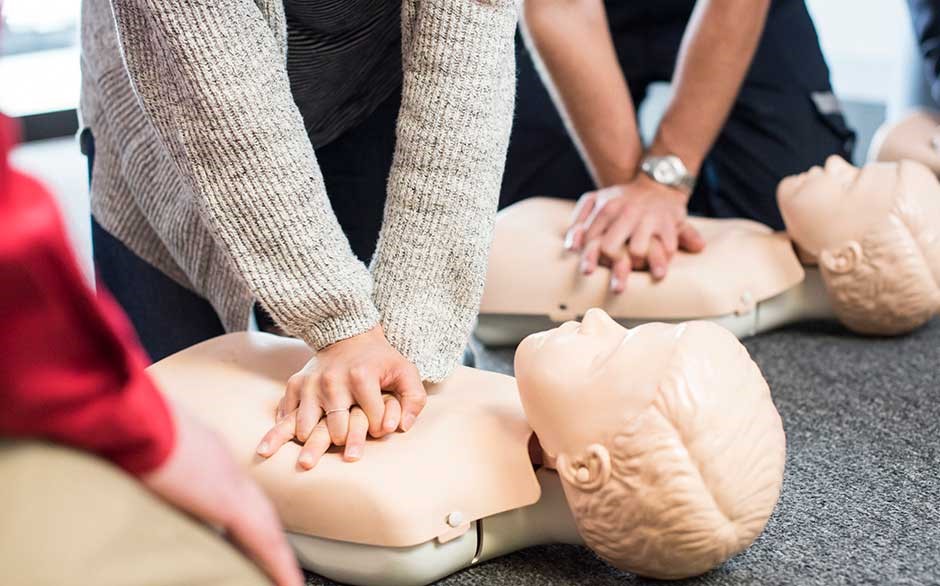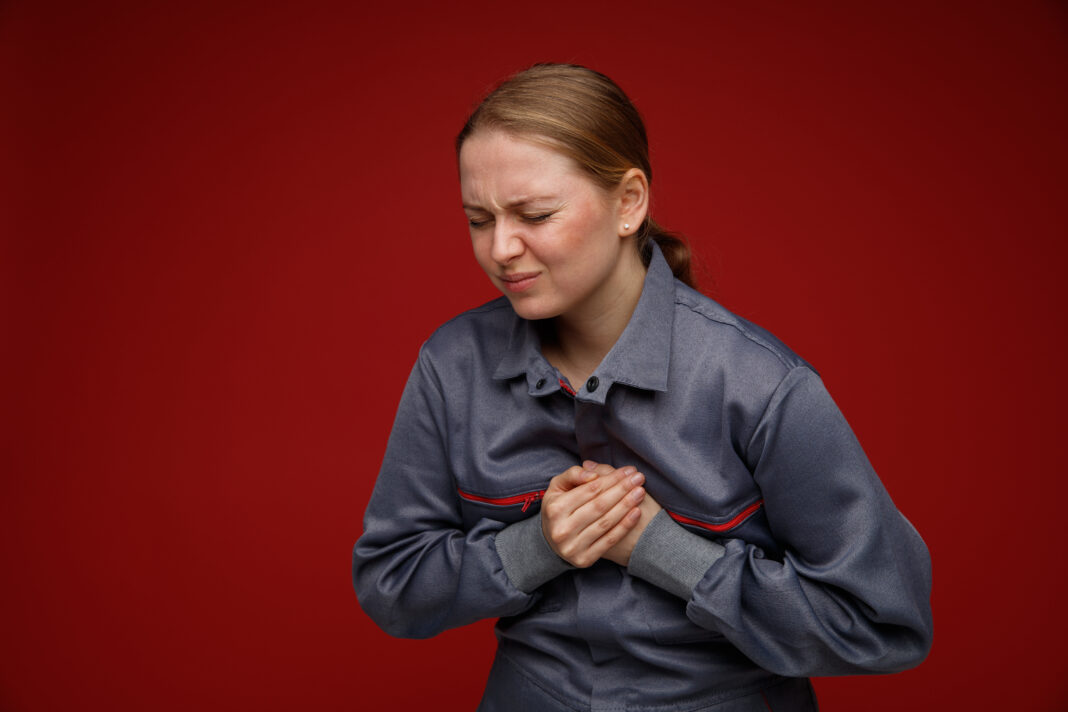It was a hot and humid evening on June 30, 2025, when a 36-year-old teacher named Niaz Ahmed died of a sudden cardiac arrest while giving a lecture during a professional training session at Crescent Model Higher Secondary School in Lahore, Pakistan. A video of the tragic incident, which showed him collapsing unexpectedly, quickly went viral on social media.
Across the border, India was also awakened to equally shocking news in the same month, when actress and model Shefali Jariwala, a prominent figure in Indian pop culture, died at just 42. There were no known heart conditions or prior symptoms; her life was just cut short by the same unseen danger. Later, investigations revealed that she had been taking anti-aging injections over the years, which might be the potential contributors to sudden cardiac arrest.
Worldwide evidence shows that cardiac arrest strikes seemingly healthy young people. A comprehensive review published in JAMA reported that seemingly healthy young adults under 40 are most likely affected by cardiac arrest at a rate of about 4 to 14 cases per 100,000 people worldwide [1]. Despite the global scale of the problem, in developing countries, cardiovascular disease, cardiac arrests are a major cause of mortality.
It is estimated that 60% of the world’s coronary artery disease (CAD) patients are South Asians who have a high prevalence of CAD risk factors at a relatively young age [2]. Sudden heart collapse among young, healthy people is increasing, and the chances of survival without intervention are alarmingly low.
This article explores cardiac arrest, its silent threats, its factors, and what we can do to protect ourselves.
Why are Young Adults at Risk for Cardiac Arrest?
We often think heart attacks happen to older people with known heart problems. But this idea is dangerously wrong. Chronic stress is one of the biggest silent threats in adults as well as youngsters. While struggling with constant stress, the body keeps releasing stress hormones that raise blood pressure and cause inflammation, which in turn slowly damages the heart. Over time, this disturbance in the body’s natural balance can lead to irregular heartbeats and increase the risk of serious events like cardiac arrest.
Another underestimated risk of cardiac arrest is the lack of sleep. Research indicates that individuals who sleep fewer than six hours a night regularly are three to five times more at risk for developing life-threatening heart issues, such as sudden cardiac arrest, as compared to individuals who receive a minimum of seven to eight hours of sleep. Energy drinks do not feel dangerous, apparently, but they secretly interfere with the heartbeat and raise blood pressure.
These beverages have the potential to cause deadly incidents like cardiac arrest when taken in large quantities, at times combined with alcohol or during intense physical activity. Performance-enhancing drugs and hormones also have severe consequences. Drugs like steroids and hormone enhancers disrupt the normal electrical rhythm of the heart. Even in individuals who have had no prior heart conditions, the administration of these medications can initiate abnormal heart rhythms and increase the risk for sudden, catastrophic heart failure.
One should remember that these things are usually not detectable and don’t present in regular checks. A person may feel completely fine from the outside, but internal damage is taking place silently. The danger is that the risk isn’t always linked to age or fitness level; even young and active people can be affected without warning.

So what exactly is Cardiac Arrest?
Cardiac arrest is not the same as a heart attack. When an artery is blocked and blood supply to the heart muscle is cut off, then a heart attack happens. In contrast, an electrical malfunction in the heart causes the heart to stop beating suddenly, which results in cardiac arrest.
The difference between these two is critical. During a heart attack, a person typically remains conscious and also experiences warning signs such as chest pain or pressure. There is always a short window of time to act during which blood flow can be restored by immediate medical treatment. However, Cardiac arrest strikes without warning. The victim collapses and becomes unconscious. The victim is not breathing or breathing normally; this may mean they are making gasping noises. Without CPR or an electric shock, death occurs within minutes.
This is why cardiac arrest is so deadly. The survival rates are tragically low, often under 10 percent, outside of the hospitals. The difference can only be made by quick actions. The use of an automated external defibrillator (AED) at a time increases the chances of survival dramatically. But the reality is that cardiac arrest can happen to anyone.
Expert Opinions on Heart Disease
Heart disease and cardiovascular risks are alarmingly increasing among Pakistan’s youth. Experts are sounding a grave warning about this growing health crisis. Dr. Asaad Akbar, Chief of Cardiology at Shifa International Hospital, states that sedentary lifestyles, poor diets, smoking, and stress are the main contributors to the rise in youth cardiac cases. Especially for teens with family histories, early detection can save lives. Dr. Abdul Hakeem of NICVD adds that, “After 30, everyone should get a heart checkup,” pointing out that many patients experience vague symptoms that risk delayed diagnosis (dawn).
How Can We Protect Ourselves?
There are life-saving, simple actions that greatly reduce the risk of sudden cardiac arrest. One of the first steps is awareness. If you ever feel chest pain, unusual fatigue, or shortness of breath, then never ignore these symptoms. They may be your heart’s way of signaling that something is wrong.
Another key factor is good sleep and stress reduction. Sleep six to eight hours at night. Give rest to your heart, which is as important as eating and exercising. Some little things, such as taking a break in the day, walking, or deep breathing, calm your heart and lower stress. Exercise is good for a healthy heart and keeps everything in balance. The heart needs moderate, safe, and regular exercise, not burnout or exhaustion, because pushing your body too hard can harm.
Go for important regular heart check-ups, especially for a person who has a family history of heart disease. A simple blood test or ECG check once a year can reveal risks that may go unnoticed. Lives can be saved by detecting the hidden symptoms early. If these hidden symptoms are detected early, lives can be saved.
The best idea to make ourselves and the victims nearby safe from cardiac arrest is to get trained in CPR.
And to learn how to use an automated external defibrillator (AED). These machines are now commonly available in schools, gyms, and workplaces. It only takes a few minutes to learn how to use them. But it will make the difference between life and death in an emergency.
The increasing cases of sudden cardiac arrest in Pakistan and South Asia are wake-up calls for us. Heart problems can strike anyone, regardless of how physically fit they look. You should adopt healthy habits, recognize symptoms early, and equip yourself with life-saving skills. In this way, you can protect your heart and your loved ones from this silent killer.
References:
- Tseng, Z. H., & Nakasuka, K. (2025). Out-of-Hospital Cardiac Arrest in Apparently Healthy, Young Adults. JAMA, 333(11), 981–996. https://doi.org/10.1001/jama.2024.27916
- Yusuf, A. A., Weinhandl, E. D., & Peter, W. L. S. (2014). Comparative effectiveness of calcium acetate and sevelamer on clinical outcomes in elderly hemodialysis patients enrolled in Medicare Part D. American Journal of Kidney Diseases, 64(1), 95-103. https://www.dawn.com/news/1861787/heart-disease-on-the-rise-among-pakistani-youth
- Martinez, K. A., Bains, S., Neves, R., Giudicessi, J. R., Bos, J. M., & Ackerman, M. J. (2024). Sudden cardiac arrest occurring in temporal proximity to the consumption of energy drinks. Heart rhythm, 21(7), 1083–1088. https://doi.org/10.1016/j.hrthm.2024.02.018
- Sivalokanathan, S., Małek, Ł. A., & Malhotra, A. (2021). The Cardiac Effects of Performance-Enhancing Medications: Caffeine vs. Anabolic Androgenic Steroids. Diagnostics (Basel, Switzerland), 11(2), 324. https://doi.org/10.3390/diagnostics11020324
- Verrier, R. L., & Josephson, M. E. (2009). Impact of sleep on arrhythmogenesis. Circulation. Arrhythmia and electrophysiology, 2(4), 450–459. https://doi.org/10.1161/CIRCEP.109.867028
More from Healthcare: Can Your Brain Really Grow New Cells? Exploring the Hype and Hope of Neuroplasticity

Lubna Rasheed is currently pursuing a bachelor’s in Biochemistry from the University of Veterinary and Animal Sciences, Lahore. She has a keen interest in science communication, making science understandable to the general audience.

